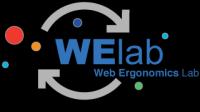Techreport,
Workshop Report: W4A - International Cross Disciplinary Workshop on Web Accessibility 2004
76. New York, USA, (November 2004)
DOI: http://dx.doi.org/10.1145/1036401.1037130
Abstract
Layout and structure are key to good visual design. They are the conduit for both the content and the graphics. Moreover, they are important for disabled people (e.g. dyslexic users) and specifically visually impaired users, as they need to be quickly and easily interacted with. The workshop aimed to address layout, structure, and presentation from the viewpoint of accessibility and good visual design; where these are in opposition, the workshop aimed to facilitate discussion between interested parties so that a solution (or at least the beginnings of a solution) can be formulated - in effect we ask the question 'Does Accessible Mean Dull?'. We support inclusive design; however, how can this be the case if users have differing needs? The organisers also assert that no one should be hindered when interacting with layout. Will making layout accessible hinder sighted or 'conventional' users? Conventional workshops on accessibility tended to be single disciplinary in nature. However, we were concerned that a single disciplinary approach prevents the cross-pollination of ideas, needs, and technologies from other related but separate fields. The workshop was therefore, decidedly cross disciplinary in nature and brought together users, accessibility experts, graphic designers, and technologists from academia and industry to discuss how accessibility could be supported. We also encouraged the participation of users and other interested parties as an additional balance to the discussion. Views often bridged academia, commerce, and industry, and arguments encompassed a range of beliefs across the design accessibility spectrum. Our aim was to focus on accessibility by encouraging participation from many disciplines, represented in the following discussion and paper abstracts.
